Weekly Index

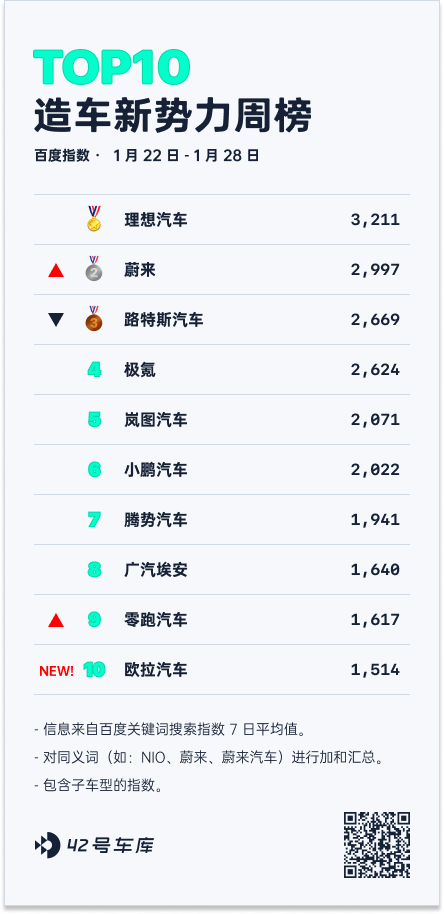
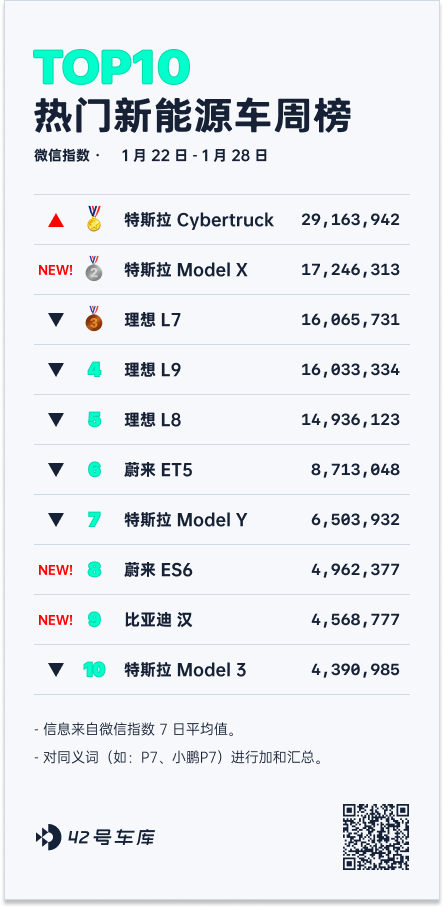

Weekly Headlines
Porsche’s All-Electric Macan Global Debut
On January 25, the all-new electric Macan made its official debut in Singapore. The all-new Macan is the second electric model under the Porsche brand and the brand’s first SUV model based on the PPE platform. It features dual motor four-wheel drive and a total output power of 450 kW.

The new model is equipped with a 100 kWh lithium battery and an 800V architecture. The power of DC recharge can reach up to 270 kW, and it can achieve a charging power of 150 kW facing a 400V charging pile. Both the exterior and interior of the car have been completely upgraded. Furthermore, the car has a low drag coefficient of 0.25, and all models in the series have a WLTP cruising range of more than 500 kilometers.
Two models of Macan, namely Macan 4 and Macan Turbo, are unveiled. Both models are equipped with a 100 kWh battery and a dual-motor four-wheel drive system. The torque of the Turbo model reaches 1130 N·m.
Porsche has officially announced that pre-sales deposits for the brand-new electric Macan have commenced domestically, and customers who pay a deposit and sign a car purchase contract before May 31 will be able to enjoy “Early Bird Privilege”, including priority delivery, legendary/dreamy/shadow car color, and other multiple benefits. The retail price of the all-electric Macan from Porsche will be officially announced at the Beijing Auto Show on April 25, 2024.
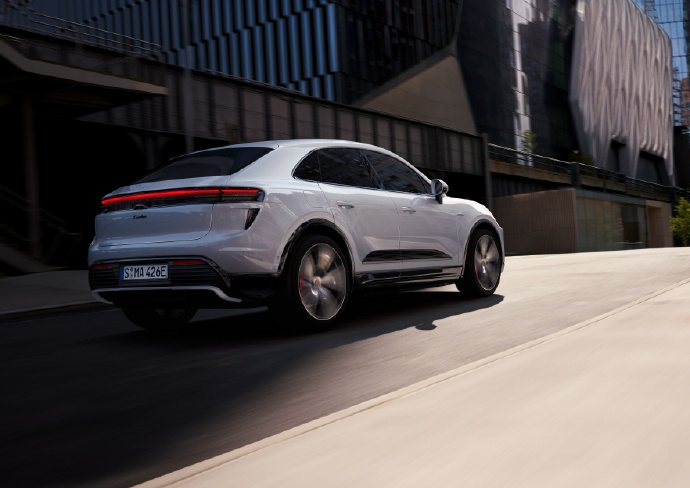
The new car’s overall appearance remains largely unchanged from the current gas model. The major highlight of the front face is the implementation of a split headlight design. Macan 4’s daytime running light and turn signal share a light strip while Turbo model’s are layered top and bottom. The line extending from the daytime running light group on the front hood adds muscle to this car, making it sportier.
From the side profile, the new car leans more towards the coupe SUV with a sloping roofline. The top line is smooth, and the front and rear wings are thick and the wheel arches slightly protrude. According to Porsche, the new Macan will mainly focus on aerodynamics and energy efficiency. The car is equipped with an automatically extendable rear wing that could calculate the optimal aerodynamic shape of the car. The vehicle’s underside is a race car-like fully-closed flat design, and the shock absorbers in the rear axle area can be flexibly adjusted to ensure low wind resistance when rebounding.

As for the interior, the new car adopts the latest family design style, and the cockpit highlights the driver-centered design philosophy. The new car opts for a sectional triple-screen design, the 12.6-inch fully digital curved display is directly in front of the driver, and a third 10.9-inch entertainment screen is set in front of the passenger seat. The new car is equipped with Porsche’s classic three-spoke multifunction steering wheel, while the center console has a touch function control area. Below the air-conditioning vent, some physical buttons are arranged, ensuring a blend of technology and practicality.
Quick Take:
Since its launch in 2014, Macan, as Porsche’s entry-level SUV, has gradually become a pillar of Porsche, ranking only second in full-year sales to Cayenne. With the global trend of electrification, the brand-new all-electric Macan has officially debuted. With the foundation laid by Taycan, the experience of Macan is highly anticipated. After a decade, culminating in an electric metamorphosis, we are eager to see how the future sales performance of Macan will be.### Geely’s First Vehicle, the Geely AIR, Officially Announced
On January 26, Geely unveiled their first official vehicle model, formally named ‘Geely AIR’. The new car is expected to be priced around 200,000 RMB. Its innovative design, inspired by commercial aviation, is termed the ‘OneBox’ style by officials, and comes in six body colors.
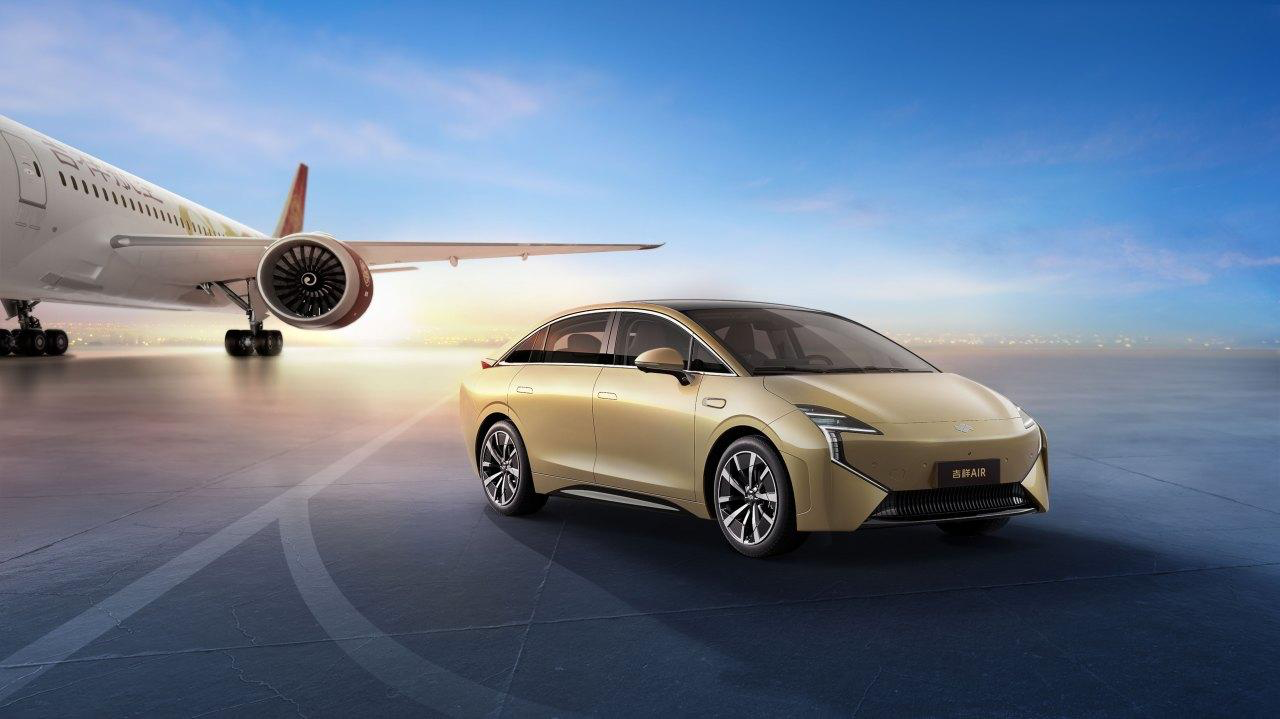
Visually, the new car delivers a striking impact. The body outlines are created by simple lines, with the visual focus shifting towards the front, conveying dynamic aesthetics. The vehicle features sharp LED headlights and a trapezoidal air inlet at the front. The car’s side panels resemble that of a concept car, forming a unified look that extends to the headlights, resulting in a rich and full frontal body shape.
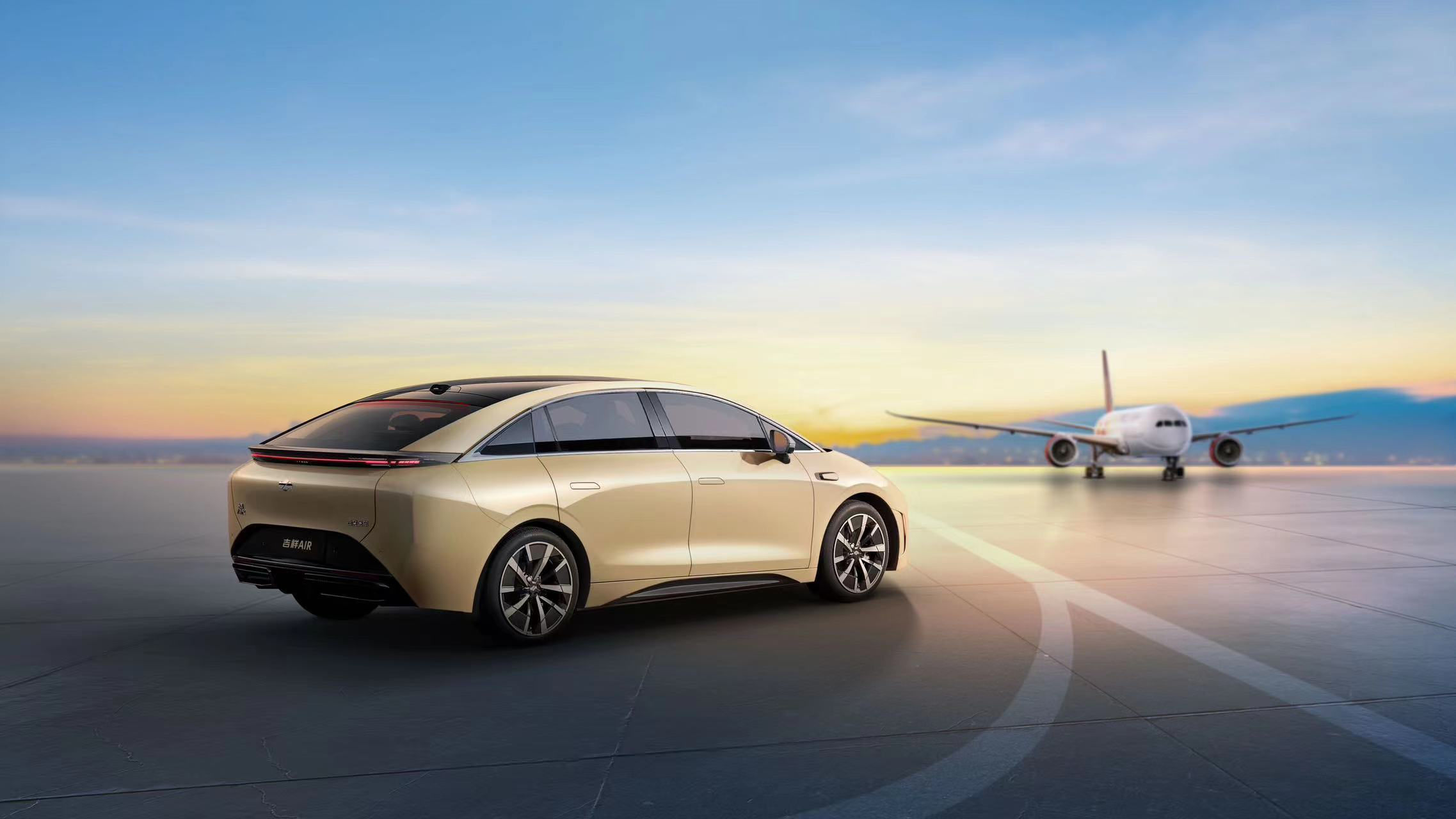
From the side view, the vehicle sports a large fastback design. The small window area, paired with large wheel arches, gives it a sporty look. The rear end is step-like in design, and although devoid of complicated adornments, exhibits plentiful character. The vehicle uses fashionable through-type tail lights. Above the tail lights is a small duck-tail spoiler, and the rear of the car is equipped with a large diffuser, giving it a low-slung look. Given the overall body design, the car is expected to have great wind resistance.
Quick Review:
Geely will roll out a comprehensive mobility solution based on this first model, integrating both Geely aviation and automobile services. This will provide users with a one-stop travel experience on land and in the air, including new car models, airport shuttle services, airport valet parking, destination car rental, membership benefit sharing, and more. It’s exciting to think about the different travel experiences this full suite of services from land to sky can bring.
DF’s VOYAH and Huawei Reach a Strategic Partnership
On January 22, DF’s VOYAH and Huawei officially signed a strategic partnership agreement. Playing to their respective strengths, they will work together to create the ultimate intelligent mobility experience based on user needs. Through their collaborative efforts, innovation in various fields will be explored, accelerating the large-scale commercial application of intelligent technology.
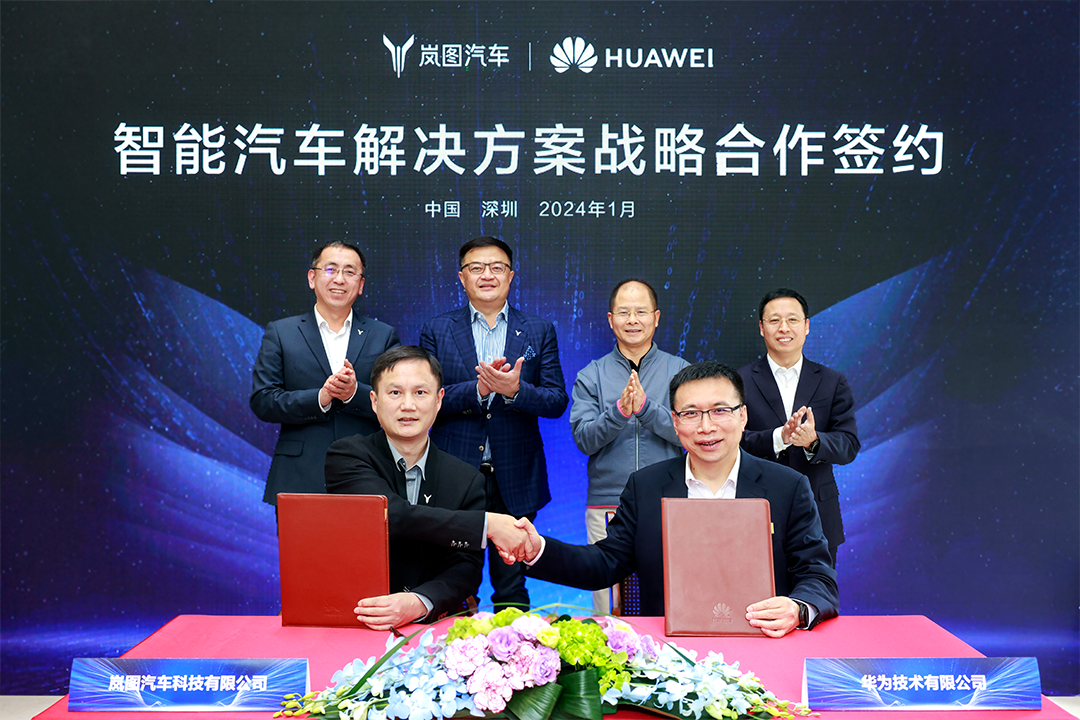
Party Committee Member and Deputy General Manager of DFAC, Yu Zheng, CEO of VOYAH Lu Fang, Deputy Chairman and Rotating Chairman of Huawei Xu Zhijun, and CEO of Huawei’s Smart Car Solutions BU, Jin Yuzhi, attended the discussion and jointly witnessed the signing. COO of VOYAH Jiang Tao and Vice President of Huawei’s Intelligent Car Solutions BU Chi Linchun signed on behalf of the two parties. This strategic cooperation agreement marks a new stage in the partnership between DF’s VOYAH and Huawei.
At the signing ceremony, both parties engaged in in-depth discussions surrounding the development trends of intelligent connected vehicles. Leveraging their respective strengths, they aim to jointly promote the high-quality development of the automobile industry. DF VOYAH, relying on the 55-year vehicle-building experience accumulated by its parent company, DFAC, owns several globally pioneering technologies in building new energy vehicles. Huawei, with its profound accumulation in ICT technologies and continuous breakthroughs in the intelligent domain, will also boost DF VOYAH to further upgrade and iterate in the field of intelligent new energy vehicles.
Quick Comments:
The representative from Huawei at the signing ceremony of their collaboration was Xu Zhijun, the rotating chairman of Huawei. When Huawei spearheaded cooperation with BAIC, CCAG, and GAC on the HI model at the Shanghai Auto Show in April 2021, Xu Zhijun was the leading figure, giving a high probability that VOYAH’s collaboration with Huawei also follows the HI model. After GAC essentially withdrew from this mode of cooperation in March 2023, the HI model now only remains with avatr from CCAG. Thus, Huawei’s collaboration with DF VOYAH is to some extent a continuation of the familiar HI model, still with Xu Zhijun supporting, still with state-owned enterprises, and still with To B business. It is worth noting that on the day of the official announcement of their collaboration, the A-share price of DFAC had already hit the daily limit.
Official Release of BMW i5
On January 25, BMW i5 was officially released, launching five car models with a price range of 439,900-639,900 yuan. The 5 Series, as the mainstay of the BMW brand since its birth in 1972, has now introduced its eighth generation of new models, and for the first time, it brings the pure electric BMW i5, marking the most-selling BMW entry into the intelligent electric era.

In terms of appearance, the i5 and 5 Series both offer the optional sport package and luxury package exterior styles with no distinct differences between the gasoline and pure electric models.
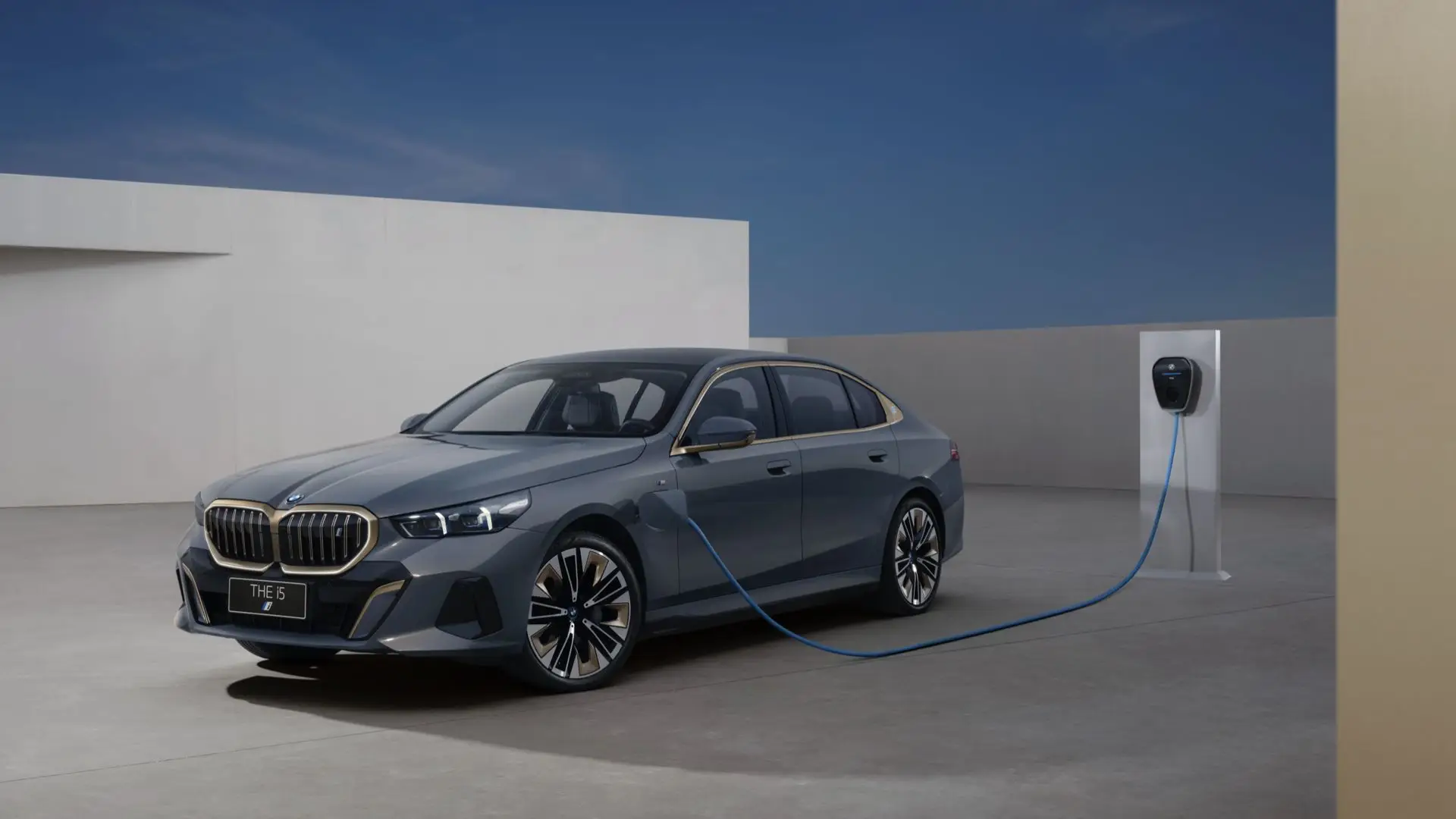
The dimensions are 5,175 / 1,900 / 1,520 mm, with the wheelbase remaining at 3,105 mm, consistent with the current model. However, the side profile of the body has undergone a new design, with the longer tail of the current model being replaced by a short smooth back design on the new model, giving the whole body posture a sportier look with no discordances even after extension.

On the finer details, the illuminated numeric identification on the C-pillar of the new car is exclusive to the domestic version. On the i5, this identification will flash according to the charging status.
 The interior design scheme of the BMW 7 Series has also been applied and evolved on the all-new 5 Series, with similar 7 Series interactive ambient lighting strips that can even display different colours in different areas on the BMW i5. Coupled with the 12.3-inch instrument panel + 14.9-inch central control screen continuous screen design, the visual effect inside the car is filled to the brim, making you feel like you’re in a mini 7 Series when you sit in the front seat.
The interior design scheme of the BMW 7 Series has also been applied and evolved on the all-new 5 Series, with similar 7 Series interactive ambient lighting strips that can even display different colours in different areas on the BMW i5. Coupled with the 12.3-inch instrument panel + 14.9-inch central control screen continuous screen design, the visual effect inside the car is filled to the brim, making you feel like you’re in a mini 7 Series when you sit in the front seat.
In terms of power, the i5 adopts BMW’s self-developed excitation synchronous motor. BMW is currently the only luxury car company to use this type of motor. The unique brush module of the excitation synchronous motor has a long lifespan and efficient and silent performance. It can also perform superior acceleration in mid-to-high speed sections compared to the permanent magnet synchronous motor.
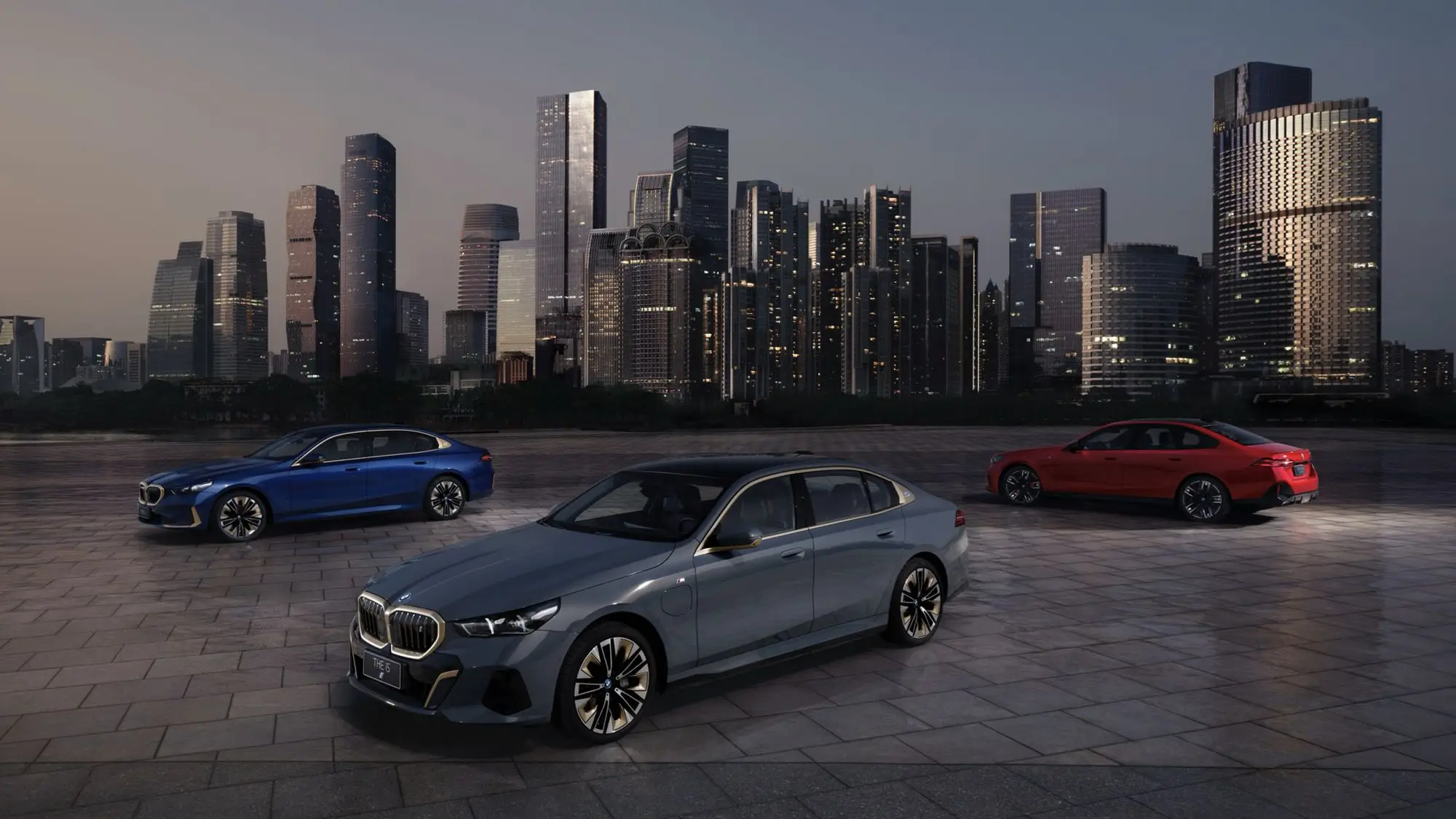
The domestic i5 is equipped with the fifth-generation eDrive technology. The maximum power of BMW i5 eDrive35L is 210 kW, the maximum torque is 410 N·m, the battery is a ternary lithium battery, with a capacity of 79.05 kWh, and the CLTC pure electric driving range is 536 km. At the same time, the i5 M60 has a maximum power of 442 kW, a peak torque of 795 N·m, which is equivalent to the previous generation BMW M5 model, and the 0-100km/h acceleration time of the dual-motor four-wheel drive model is 3.8 seconds. Faster and quieter are the features of the new i5 M series models. Besides, users can activate the Sport Boost function at any time through the paddle to get an additional 30 N·m torque output.
Quick Review:
With the introduction of the all-new i5, BMW is for the first time adopting a pricing strategy of making electric and gasoline versions the same price, giving them an initial advantage in cost. The arrival of the i5 marks a further step into the era of intelligent electric driving for BMW. At the launch, we see the technological advances of the i5, as well as BMW’s pursuit of driving pleasure whether it’s an electric or gasoline model. We also see BMW following up with services such as supercharging stations, which increases our anticipation for how this traditional luxury brand will perform in the new energy market. Now that electric and gasoline vehicles are priced the same, if you’re looking to buy a BMW 5 Series, would you choose the gasoline 5 Series or the pure electric i5?
Geely LEVC L380 Model Off the Line
On January 26, the LEVC L380 sample vehicle was finished. Positioned as a pure electric MPV, it is based on the SOA framework, named after the Airbus A380, the world’s largest wide-body aircraft, suggesting that it will have a very spacious interior. At the same time, this vehicle will provide at least three to a maximum of eight seating arrangements to choose from.
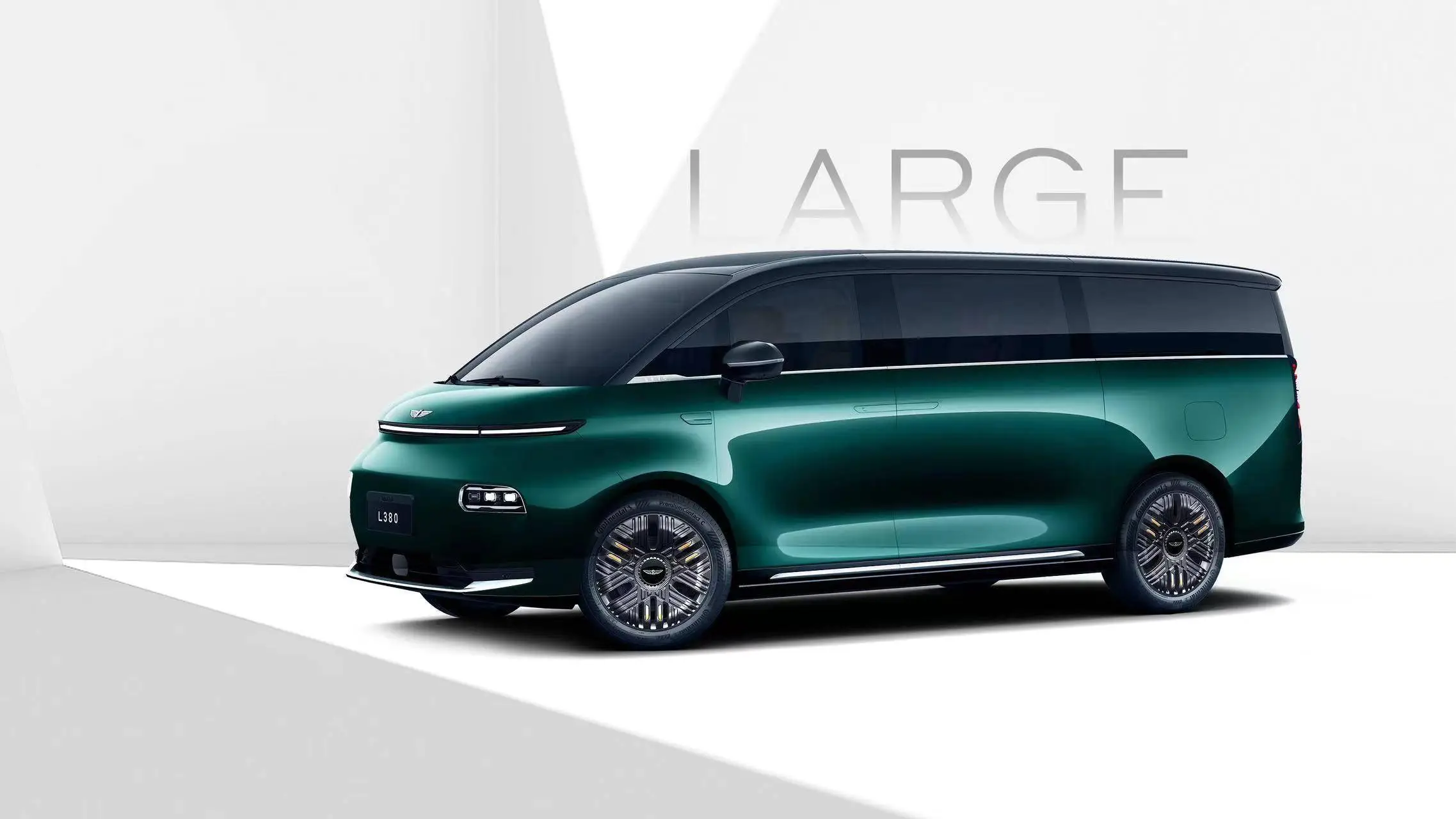
In terms of exterior, the front of the vehicle is very wide, adopting the currently popular closed front face and separate headlight group. Above is a three-segment LED light strip, below which are the far and near light groups. The overall style is quite futuristic. The air duct design below the light group and the silver decorative strip at the bottom of the front enhance the layers of the front of the car.From the side view, this vehicle exhibits considerable body length and wheelbase, promising impressive interior space. It features an all-black roof and ABC pillar, balancing the visual proportions of the profile and making the substantial body appear less cumbersome. Moreover, the vehicle is equipped with large multi-spoke wheels and adopts concealed door handles.
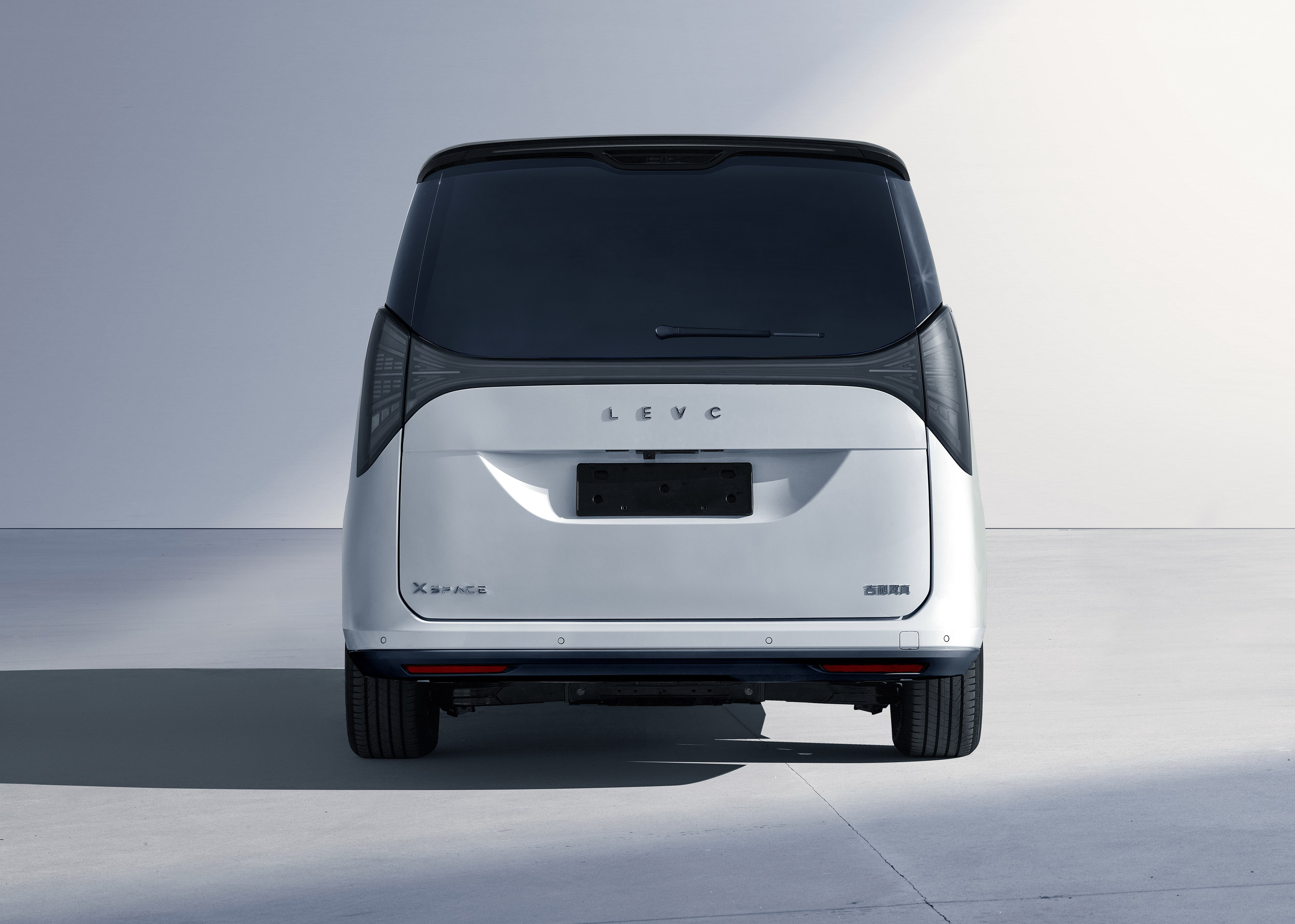
No pictures of the vehicle’s rear were released this time. Referring to previous images, the vehicle uses a thru-type tail light design, thick at both ends but thin in the middle, which creates a stunning visual effect when lit up at night. The interior has not been revealed, but Yang Xueliang has mentioned that it will offer both three-seat and eight-seat versions. Given the size of the vehicle, a three-seat configuration would likely mean a luxury environs in the rear, which could be on par with first-class airplane cabins, possibly fitted with luxury seats that can be laid flat at the touch of a button. Also, it is expected to be equipped with extensive infotainment connectivity features.
Quick comment:
LEVC, which stands for London Electric Vehicle Company, is a UK mobility brand acquired by Geely, which also owns ZEEKR and VOLVO amongst its brand portfolio. LEVC shares Geely’s global supply system and, as an international high-end new energy brand, the new MPV they are launching will likely compete with ZEEKR 009 and VOLVO EM90 in the luxury segment. LEVC’s previous models were mainly for commercial mobility. There will probably be notable differences in product definition between this new MPV and other Geely-series MPVs. We can look forward to what new innovations LEVC can bring to the luxury MPV market.
This article is a translation by AI of a Chinese report from 42HOW. If you have any questions about it, please email bd@42how.com.
